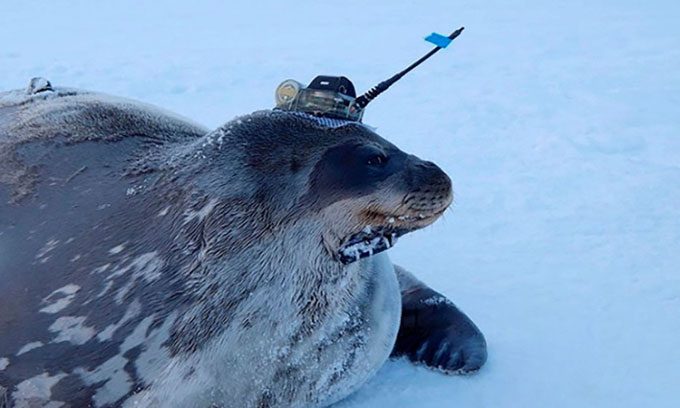Unable to conduct research directly due to harsh environments, Japanese experts are equipping seals with devices to assist.
A group of Weddell seals (Leptonychotes weddellii) have been fitted with tracking devices weighing 580 grams on their heads to aid Japanese researchers in surveying the waters beneath the thick ice shelves in Antarctica, Reuters reported on March 1.

Weddell seals equipped with devices to study the seawater beneath the thick ice shelves in Antarctica in April 2017. (Photo: National Institute of Polar Research, Japan/Reuters)
To support a research project from March to November 2017, during the Antarctic winter, Weddell seals were outfitted with depth, temperature, and thermal conductivity sensors on their heads, allowing scientists to collect data on water temperature and salinity in areas with extremely harsh natural conditions.
Project leader Nobuo Kokubun stated that such studies help scientists monitor animal behavior patterns as well as the ecosystem.
“In the summer, we can reach Antarctica by icebreaker to conduct field research and collect data there. In the winter, there are many places where such activities cannot be carried out,” Kokubun explained.
“However, even under those circumstances, many animals, such as seals, still live in Antarctica. Therefore, I think we should let them collect data.” Kokubun added.
The successfully collected data from seven seals indicated that one of them traveled as far as 633 kilometers from the Showa research station (Japan) in Antarctica, while another dove to a depth of 700 meters.
From the data, scientists also found that warm water in the upper layer of the offshore sea has been flowing to Antarctica since March, continuing through that winter. The water flows beneath the ice, carrying marine organisms like Euphausia superba, a type of crustacean that is a crucial food source for seals.
To further explore the impact of global warming on coastal areas of Antarctica, Kokubun hopes to improve the devices to make them smaller, suitable for other animals, such as penguins.
“The advantage of penguins is that they return to the same place, and we can collect data from them immediately. Additionally, we could use the devices on a large number of penguins to cover a vast area,” he noted.





















































